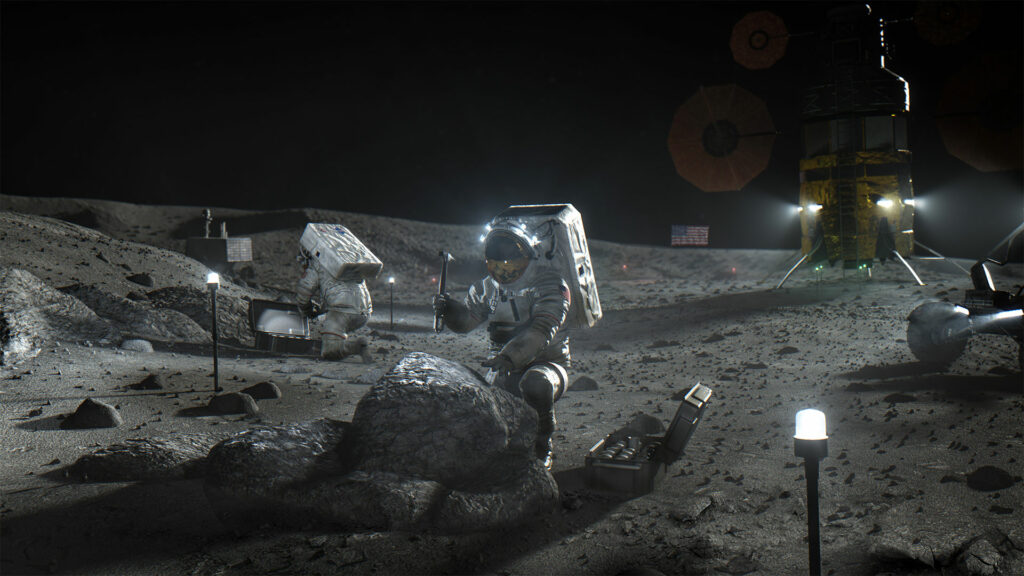The last time a human went to the Moon was on December 19, 1972, during the Apollo 17 mission. Now, NASA wants to once again send people up there.

Since the dawn of time, humans have looked at the moon with fascination and curiosity. The space race that culminated with the moon landing is one of the most cherished accomplishments of mankind (especially when you consider that they pulled it off with a small fraction of today’s computing power). But after we sent people to the moon, retrieved samples, and got a decent understanding of the lunar surface, the incentive for manned missions dropped substantially. After all, even with today’s technology, sending people to the moon is very expensive.
But manned lunar missions may be catching a second wind.
In the last 18 months, NASA accepted a challenge to develop a new moon exploration plan. For the first time in almost 50 years, the space agency has a tangible plan to send people to the moon — and it wants to do so by 2024, with the Artemis program. The plan is to use the same impetus as with the space race, but deploy innovative technologies to explore more of the lunar surface than ever before, and land the first woman and next man on the Moon.
NASA wants to use its powerful new rocket, the Space Launch System (SLS) in conjunction with the Orion spacecraft, a class of partially reusable space capsules from NASA’s human spaceflight programs. The first stage of Artemis will feature three flights to the moon: first, an unpiloted SLS test flight, then a piloted 10-day loop around the moon (set for 2023), and a piloted landing near the south pole of the moon (in 2024).
The project also includes the development of new spacesuits and the development of new exploration technologies. The spacesuits of the Apollo missions were sturdy but bulky, which just won’t do for NASA’s new plan. The new generation of spacesuits will be designed for greater flexibility, allowing astronauts to collect more samples and carry out even more experiments on the lunar surface. The design of these suits will be particularly important as NASA also eyes the establishment of a permanent (or at least long-term) research center on the moon (akin to the International Space Station).
The scientific outpost is meant to be sustainable, allowing the addition of new modules by international partners. The development is still at the concept stage and an Artemis base camp would require substantial infrastructure, from rovers and power systems to living areas and water.
For now, the Artemis plan is to use humans and robots to search for resources such as water and usable materials on the lunar surface and fine-tune landing and mobility technologies, allowing astronauts to travel farther and farther on the moon.
Of course, such a massive endeavor would require strong political support. So far, the Senate has not yet passed a budget bill for this project — and the House has only offered $628 million so far.
“With bipartisan support from Congress, our 21st century push to the Moon is well within America’s reach,” said NASA Administrator Jim Bridenstine. “As we’ve solidified more of our exploration plans in recent months, we’ve continued to refine our budget and architecture. We’re going back to the Moon for scientific discovery, economic benefits, and inspiration for a new a generation of explorers. As we build up a sustainable presence, we’re also building momentum toward those first human steps on the Red Planet.”
While both the SLS and Orion are on track if no major issues emerge, the 2024 moon landing target depends on Congress giving NASA $3.2 billion for the lander development in 2021. The $628 million is a farcry from what NASA is asking.
Nevertheless, Bridenstine remains optimistic that the project will gain political support. But if things won’t go as planned, there will be no Artemis.
“It’s really simple. If Congress doesn’t fund the moon landing program, then it won’t be achieved (in 2024), I mean it’s really that simple,” Bridenstine said. But he quickly added: “I want to be clear, if they push the funding off, our goal will be to get to the moon at the earliest possible opportunity.”






